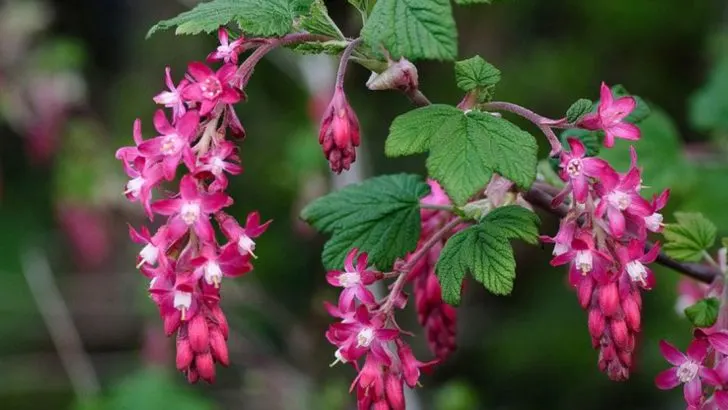The Pacific Northwest is known for its lush forests, mild climate, and abundant rainfall, making it an ideal place for a variety of native plants to thrive. By incorporating native species into your garden, you can create a low-maintenance, eco-friendly landscape that supports local wildlife and pollinators. Here are 27 native plants that belong in every Pacific Northwest garden.
Oregon Grape
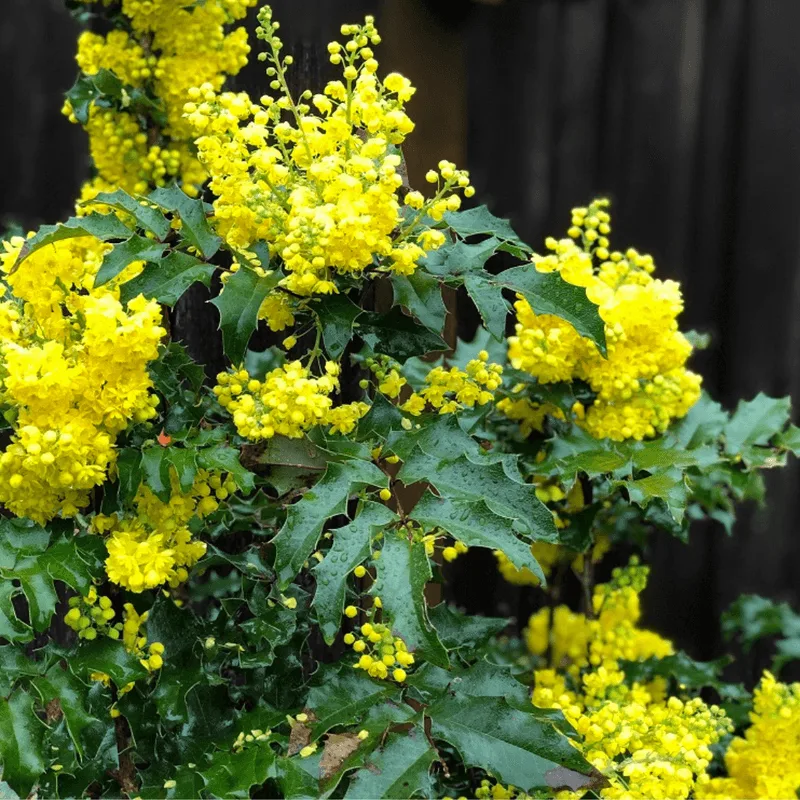
Admired for its evergreen leaves and yellow flowers, this hardy shrub thrives in both sun and shade. Oregon Grape, or Mahonia aquifolium, offers year-round interest with its holly-like foliage and grape-like blue berries. These berries attract birds, adding life to any garden.
The plant is drought-tolerant once established, making it ideal for gardeners looking to conserve water. Its adaptability to various soil types and conditions further enhances its appeal.
Adding Oregon Grape to your garden promises a touch of natural beauty with minimal maintenance, perfectly suited to the Pacific Northwest climate.
Red Flowering Currant
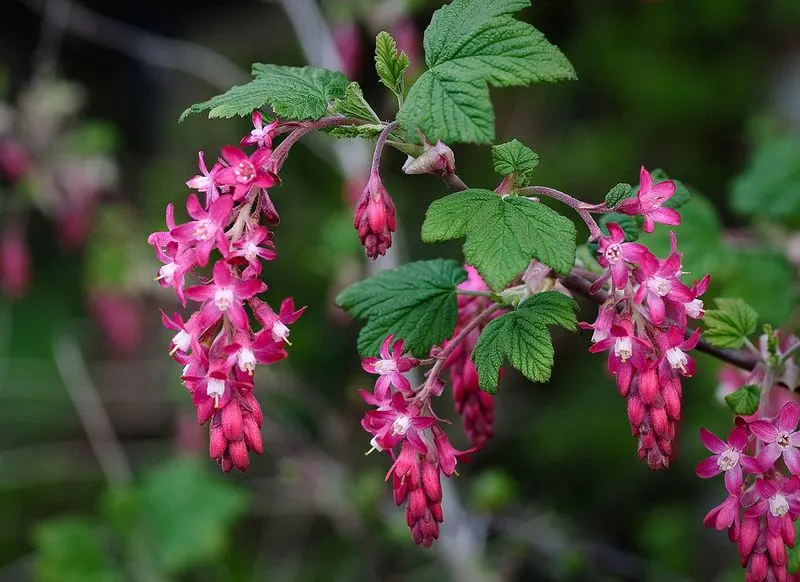
The Red Flowering Currant captivates with its striking clusters of pink to red flowers, a favorite among hummingbirds. This deciduous shrub, native to the Pacific Northwest, blooms in early spring, heralding the season’s arrival. Its lobed leaves provide an attractive backdrop, enhancing garden aesthetics.
After flowering, blue-black berries offer food for wildlife, ensuring your garden remains a vibrant ecosystem year-round. This plant flourishes in well-drained soil and can tolerate partial shade, making it versatile for various garden settings.
Easy to maintain, it adds a splash of color and life to your garden effortlessly.
Sword Fern
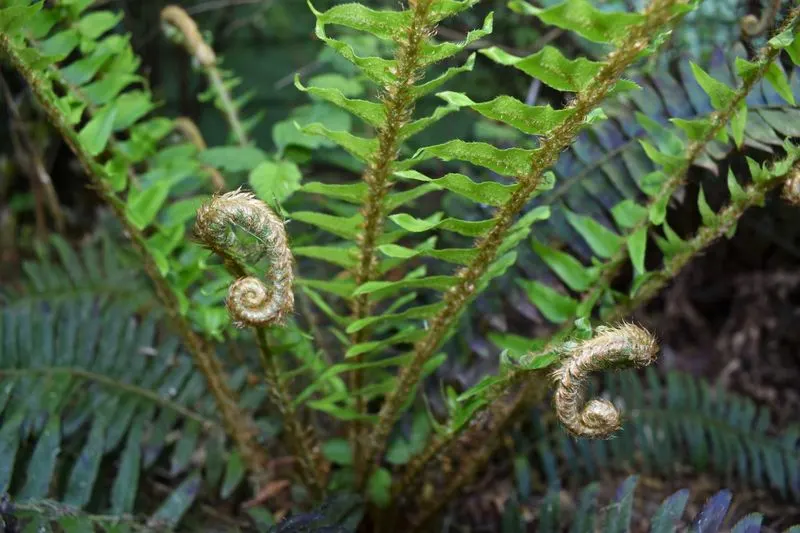
A quintessential addition to any Northwest garden, Sword Fern brings elegance with its lush, arching fronds. Its evergreen nature ensures year-round greenery, providing structure and texture even in winter.
This fern thrives in shady spots under tree canopies, making it perfect for woodland gardens. Its resilience to varying soil conditions and minimal care requirements make it a gardener’s favorite.
Beyond aesthetics, Sword Fern plays a crucial role in preventing soil erosion on slopes. Its dense growth habit stabilizes soil, offering both beauty and function to your landscape.
Western Columbine
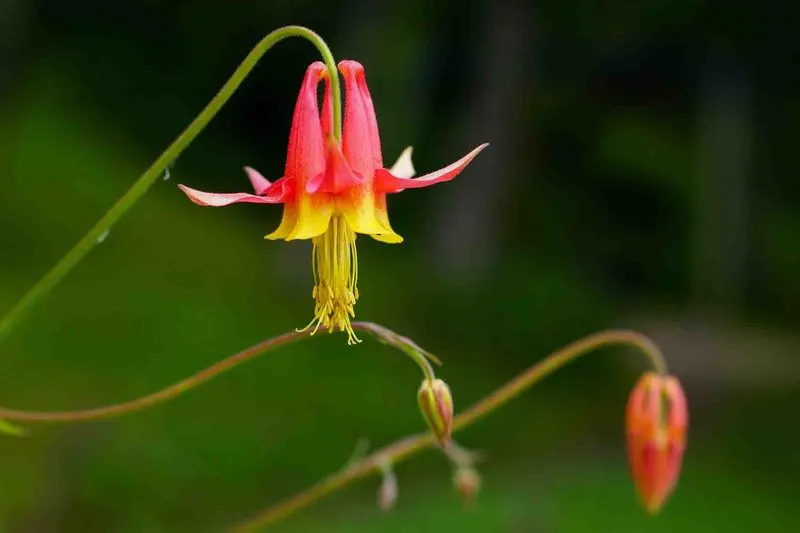
Western Columbine enchants gardeners with its elegant red and yellow flowers, attracting pollinators like bees and butterflies. These delicate blossoms dance on slender stems, creating a picturesque scene in any garden.
The plant thrives in partial shade, preferring moist, well-drained soils. It adapts well to rock gardens or naturalized settings, enhancing the overall biodiversity of your garden.
While its flowers are the main draw, the fern-like foliage adds an additional layer of texture. Western Columbine’s charm and ecological benefits make it a must-have for native plant enthusiasts.
Salal
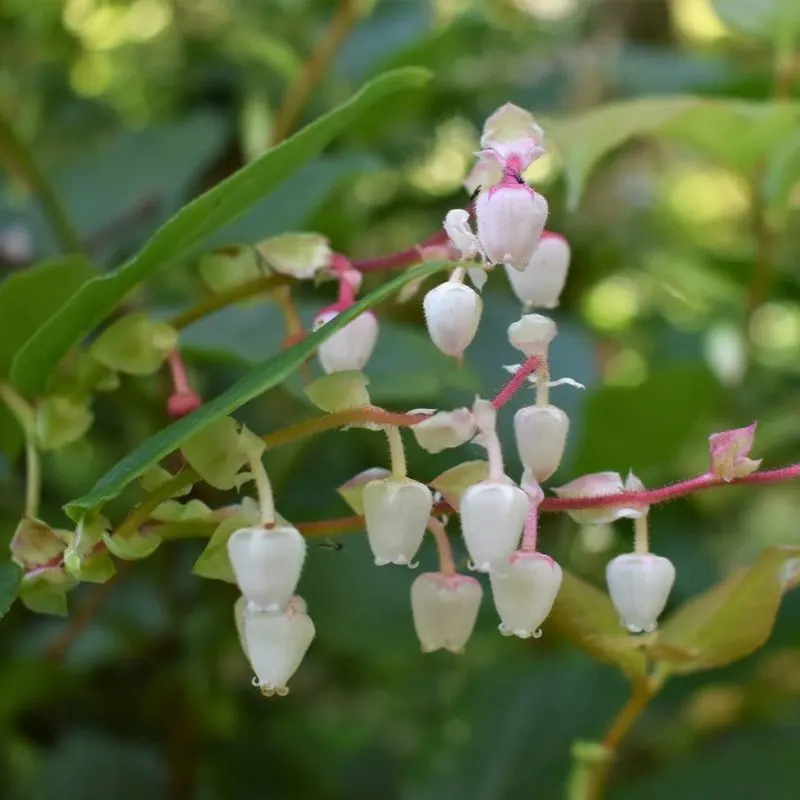
Renowned for its robust foliage and edible berries, Salal is a staple in Pacific Northwest gardens. Its glossy, evergreen leaves create a lush backdrop, while the berries provide both human and wildlife food sources.
This versatile shrub thrives in a range of conditions, from shady woodlands to sunny borders, thanks to its adaptive nature. Once established, Salal requires minimal care, making it perfect for low-maintenance gardening.
Beyond its ornamental value, Salal supports local ecosystems, offering habitat and nourishment, thus enriching your garden both aesthetically and ecologically.
Kinnikinnick
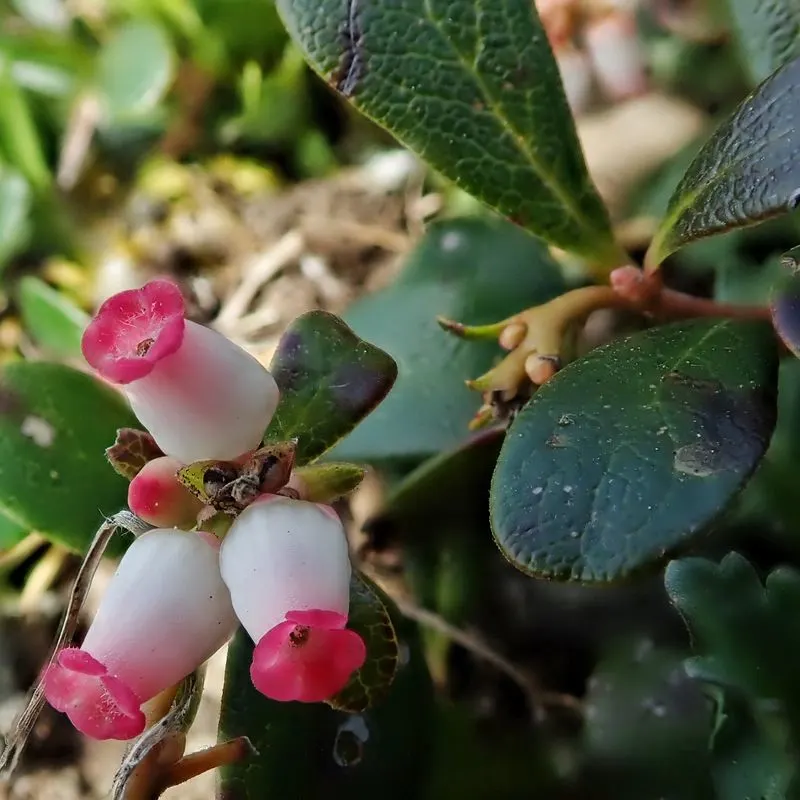
Kinnikinnick, also known as Bearberry, offers a hardy ground cover solution with its low-growing, creeping habit. The small, glossy leaves and bright red berries create a charming, carpet-like effect in the garden.
Perfect for sandy or rocky soils, Kinnikinnick excels in xeriscaping, reducing the need for supplemental watering. Its ability to thrive in both sun and partial shade adds to its versatility.
The plant plays a crucial role in preventing soil erosion and provides habitat for small wildlife. With its year-round appeal, Kinnikinnick is a practical and attractive choice for Northwest gardens.
Pacific Bleeding Heart
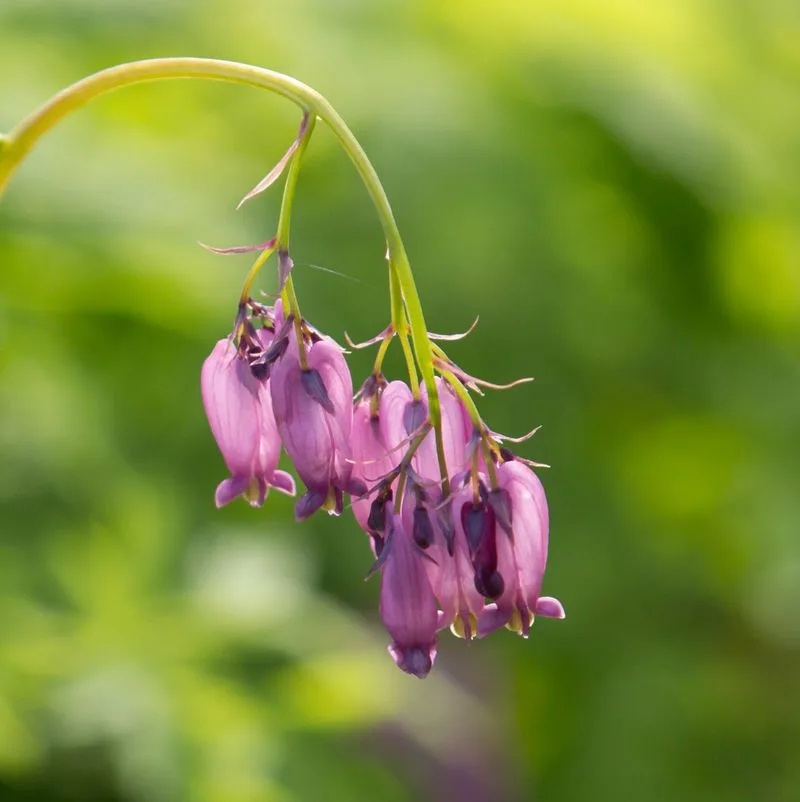
Pacific Bleeding Heart graces gardens with its charming heart-shaped pink flowers, suspended from delicate stems. These perennials are a delightful sight in shaded woodland settings, enhancing garden intimacy.
Preferring moist, rich soils, they flourish in areas with ample shade, pairing well with ferns and hostas. Their foliage provides a lush, green backdrop, complementing their floral display.
Beyond aesthetics, these plants attract pollinators, contributing to a garden’s ecological diversity. Easy to grow and maintain, Pacific Bleeding Heart is a favored choice for gardeners seeking beauty with minimal effort.
Douglas Fir
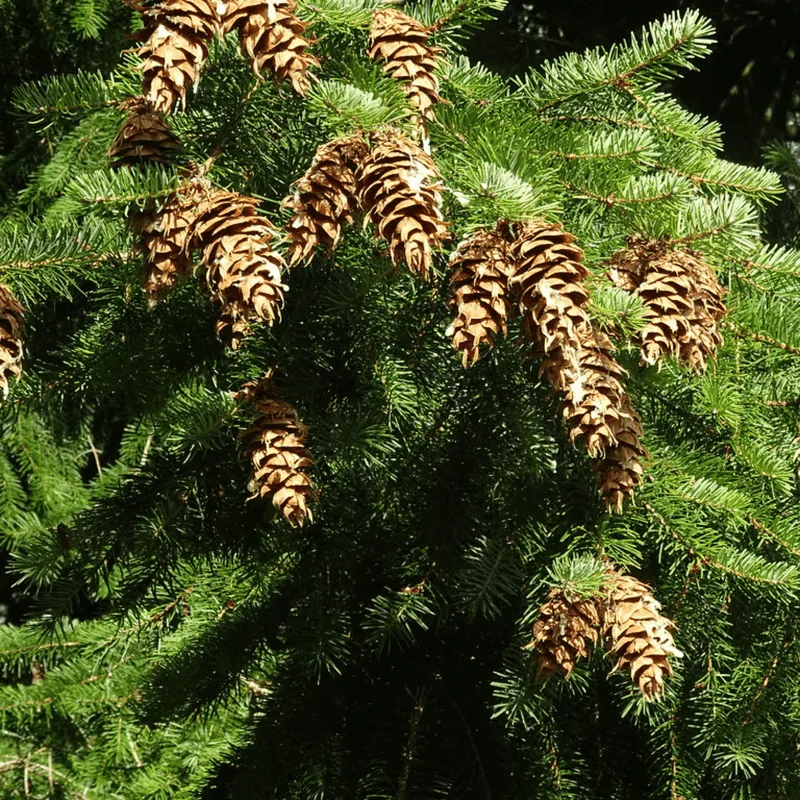
No Northwest garden is complete without the iconic Douglas Fir. This towering conifer offers more than just height; its dense foliage provides shelter for wildlife, making it invaluable for garden ecosystems.
Known for its resilience, Douglas Fir thrives in various soil types, from well-drained to slightly acidic soils. Its robust nature makes it ideal for larger landscapes, where it can grow unimpeded.
The tree’s woodsy aroma and pyramidal shape add character to gardens. As it matures, Douglas Fir becomes a living centerpiece, embodying the spirit of the Pacific Northwest.
Evergreen Huckleberry
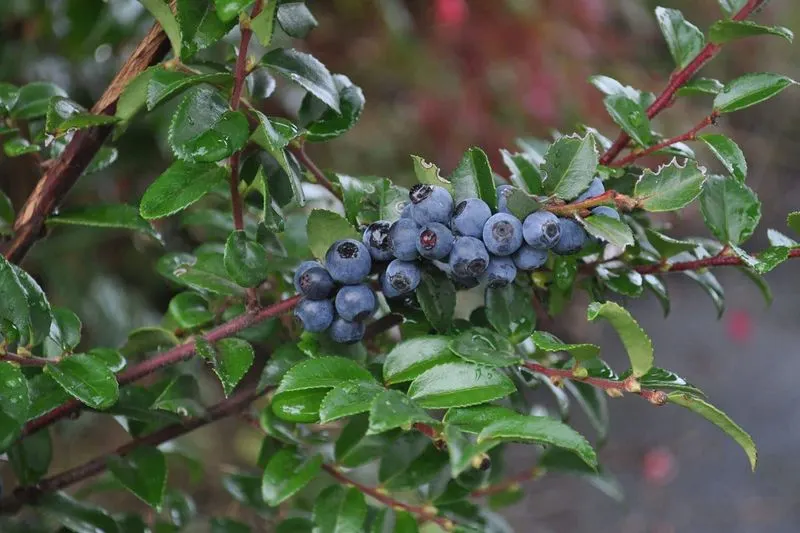
Evergreen Huckleberry captures attention with its glossy leaves and clusters of dark purple berries. This shrub is perfect for forest understory plantings, thriving in the dappled shade beneath taller trees.
In spring, small pinkish flowers emerge, providing nectar for bees. By fall, the berries attract birds, making it a dynamic addition to gardens concerned with wildlife.
Its ability to grow in acidic soils typical of the Pacific Northwest makes it an easy-care choice for gardeners. Evergreen Huckleberry is more than just a pretty face; it’s a vital part of local ecosystems.
Western Red Cedar
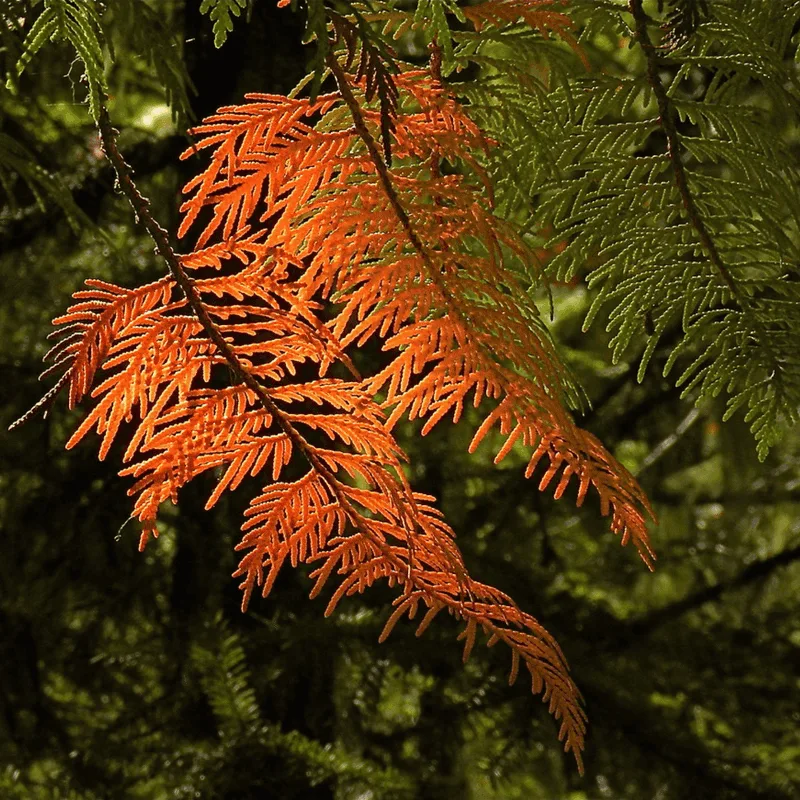
Western Red Cedar is revered for its aromatic foliage and majestic growth. This evergreen tree offers shelter and food sources for local wildlife, playing a crucial ecological role in native gardens.
Tolerant of wet soils, it thrives in diverse conditions, from coastal areas to inland forests. Its resistance to disease and pests further enhances its appeal for gardeners seeking longevity.
The tree’s rich history with indigenous cultures adds cultural significance to its beauty. As a garden addition, Western Red Cedar provides both practical benefits and a touch of heritage.
Camassia
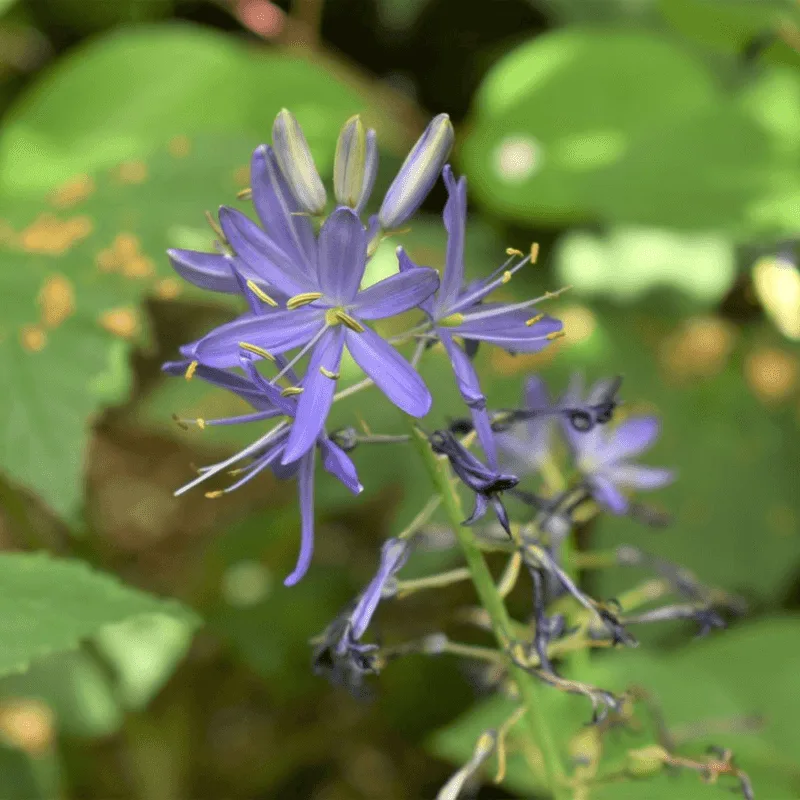
Camassia, with its striking blue star-shaped flowers, stands out in meadows and garden beds alike. This bulbous perennial shines in spring, bringing a burst of color that marks the season’s bloom.
Preferring moist, well-drained soils, Camassia flourishes in full sun to partial shade, adapting seamlessly to varied garden settings. Its flowers attract pollinators, enhancing garden biodiversity.
The plant’s cultural history, with its roots as a traditional food source for Native American tribes, adds depth to its presence in gardens. Camassia combines beauty with historical significance, enriching your landscape.
Evergreen Violet
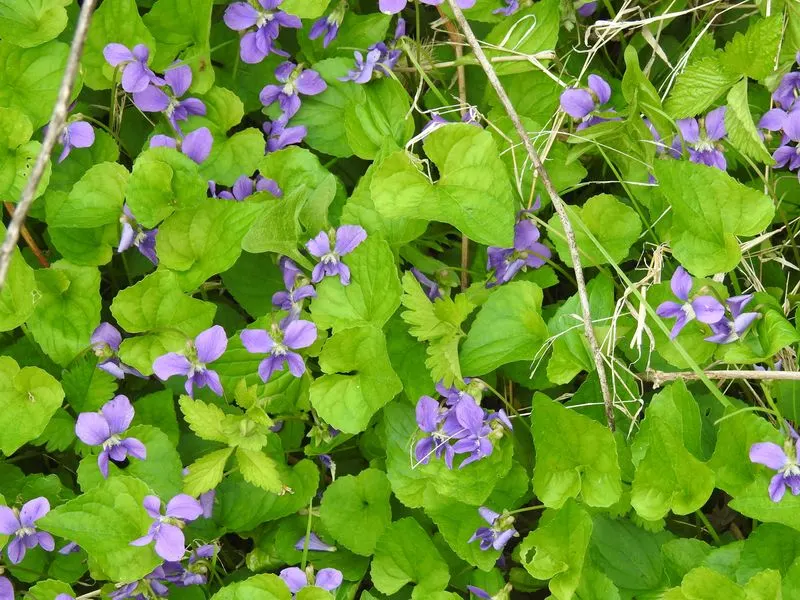
Evergreen Violet charms with its heart-shaped leaves and bright yellow flowers, offering a subtle yet impactful addition to shady garden corners. This perennial thrives in the dappled light beneath trees.
Its low-growing habit and evergreen nature ensure year-round interest, even in the quiet of winter. Easy to care for, Evergreen Violet is perfect for those seeking a pop of color with minimal effort.
Besides its aesthetic appeal, the plant provides nectar for pollinators, supporting garden biodiversity. Its resilience and charm make it a delightful choice for enhancing shaded landscapes.
Coast Silktassel
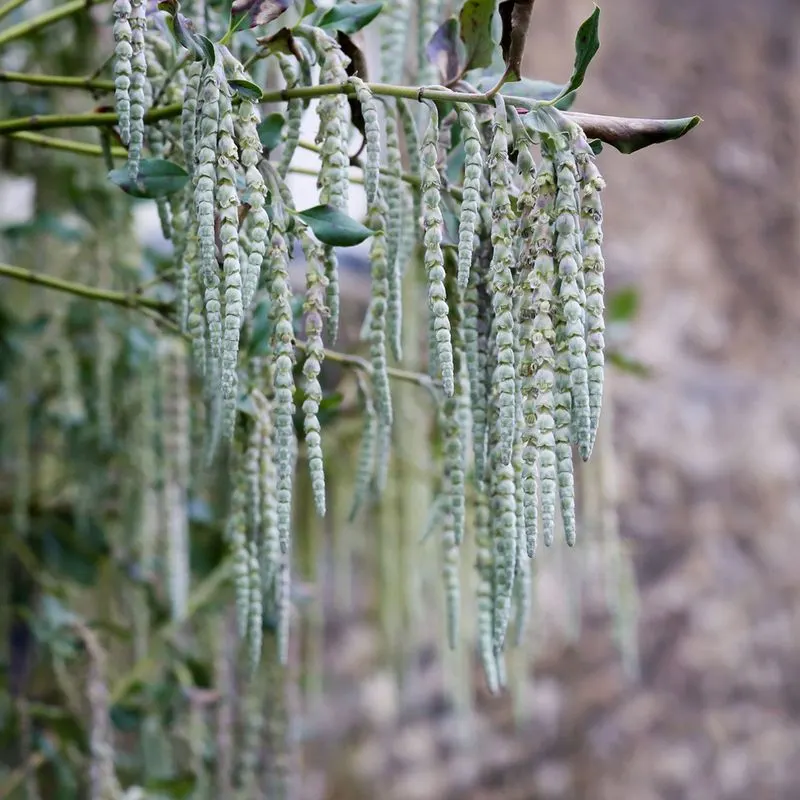
Coast Silktassel is a spectacle in winter gardens, showcasing long, silvery catkins that sway gracefully in the breeze. This evergreen shrub thrives in coastal conditions, tolerating salty air and wind.
Its dense foliage provides privacy and shelter for wildlife, making it a valuable addition to eco-friendly gardens. The plant’s adaptability to various soil types enhances its appeal.
Beyond its visual allure, Coast Silktassel’s minimal maintenance requirements make it perfect for busy gardeners. Its unique winter display offers a touch of elegance, proving that beauty thrives even in the cold months.
Pacific Rhododendron
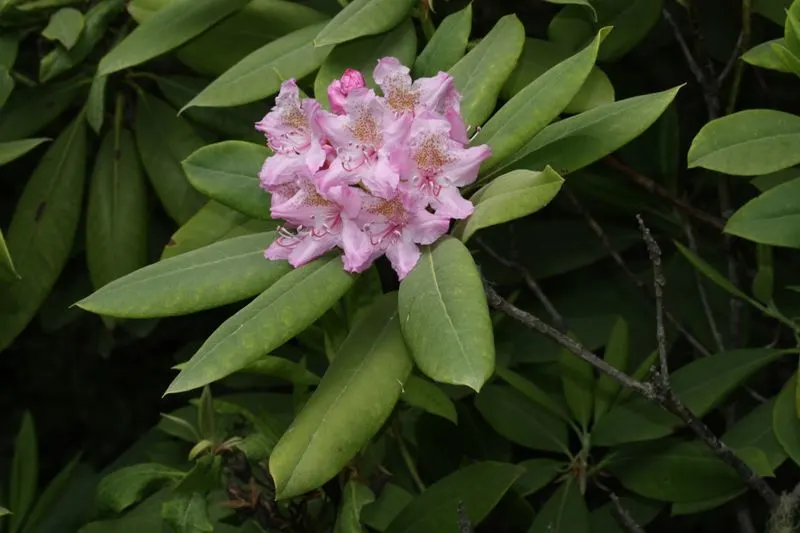
Pacific Rhododendron dazzles with its vibrant clusters of pink flowers, a classic sight in Northwest gardens. This evergreen shrub thrives in well-drained, acidic soils, common in the region.
Its large, glossy leaves provide a lush backdrop year-round, enhancing garden depth. In spring, the spectacular blooms attract pollinators, adding life to your landscape.
Known for its resilience, this rhododendron adapts well to various garden settings, from woodland gardens to formal hedges. Its timeless beauty and ecological value make it a beloved choice for native plant enthusiasts.
Bigleaf Maple
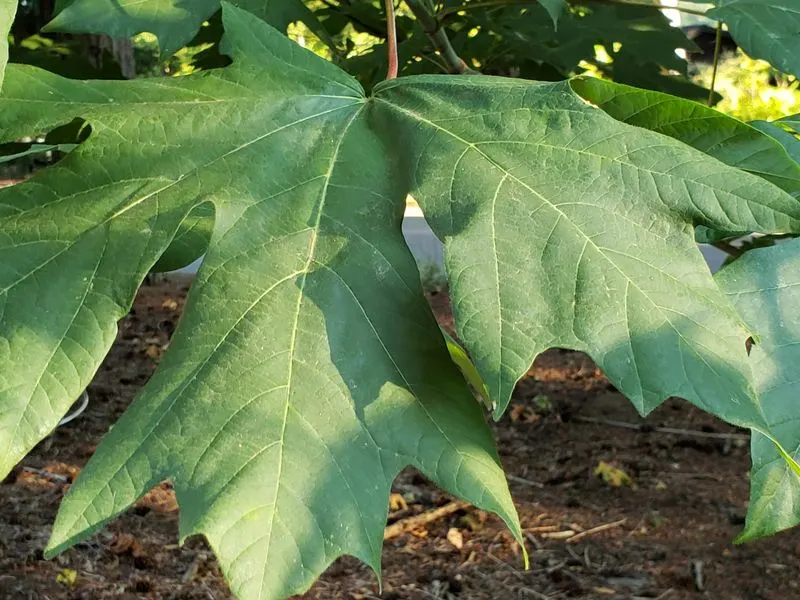
Bigleaf Maple captures attention with its massive leaves, which turn brilliant shades of gold in the fall. As a native deciduous tree, it’s a focal point in any Pacific Northwest garden.
Its towering presence offers shade during the summer months, creating microclimates that benefit understory plants. In autumn, its leaf litter enriches the soil, supporting garden health.
The tree’s adaptability to various soil types makes it a versatile choice for different landscapes. Its majestic appearance, combined with ecological benefits, ensures Bigleaf Maple remains a garden favorite.
Thimbleberry
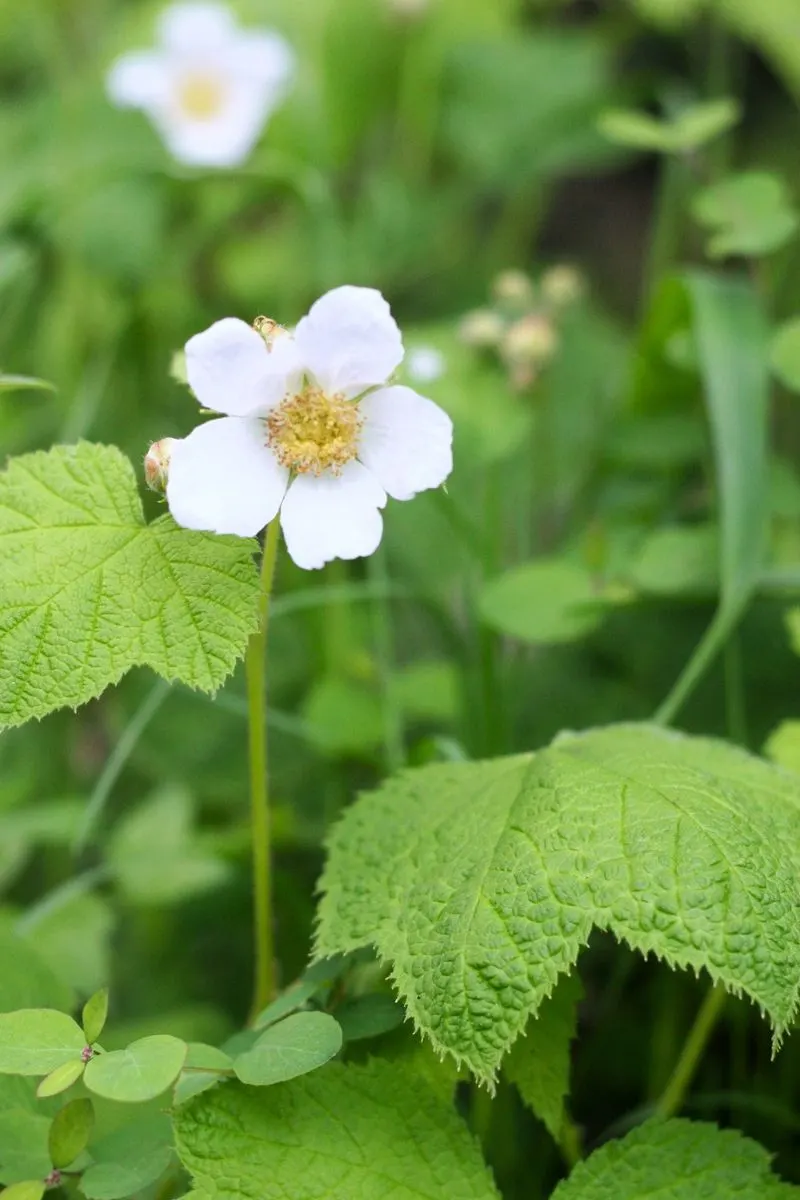
Thimbleberry delights with its broad leaves and raspberry-like fruits, perfect for naturalizing sunny spots. This deciduous shrub adds texture with its soft, velvety foliage.
In spring, white flowers attract pollinators, while the red fruits feed birds and other wildlife. Its ability to thrive in poor soils makes it an easy-care addition to gardens.
Beyond its ornamental appeal, Thimbleberry’s fruits are edible, offering a sweet treat for humans and animals alike. Its vibrant presence and ecological contributions make it a valuable asset for native gardeners.
Snowberry
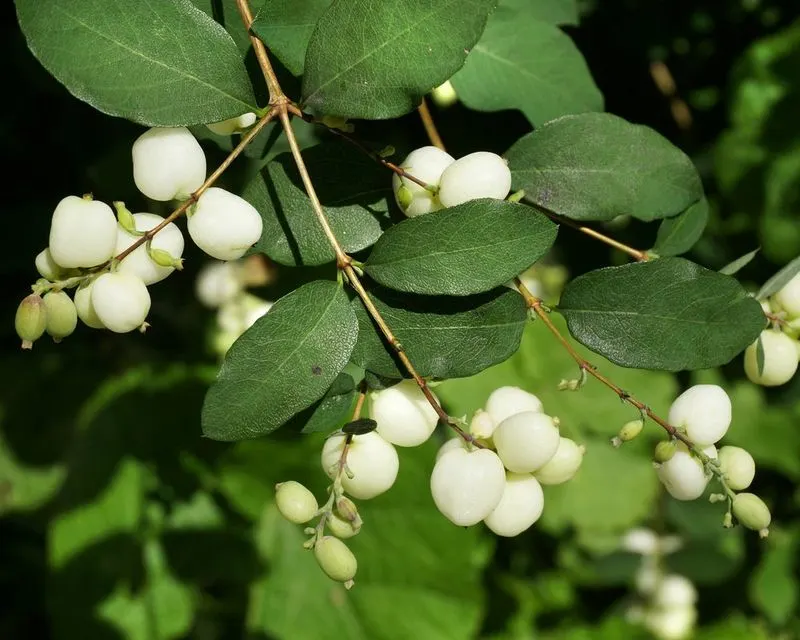
Snowberry stands out with its distinctive white, waxy berries that persist into winter. This deciduous shrub thrives in a variety of soils, from dry to moist, showcasing versatility.
Its dense growth habit provides excellent cover for wildlife, while its berries offer a winter food source. Snowberry’s adaptability to sun or shade makes it a flexible choice for diverse garden designs.
In addition to its ecological benefits, the plant’s unique appearance adds interest to winter landscapes. Snowberry’s resilience and year-round appeal make it a reliable choice for enhancing garden biodiversity.
Vine Maple
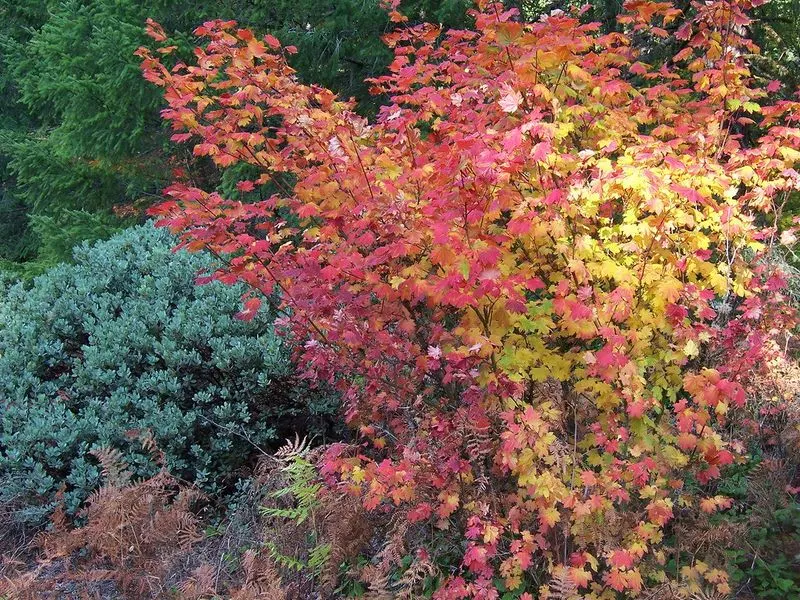
Vine Maple is celebrated for its vibrant fall foliage, displaying a brilliant array of reds and oranges. This small tree or large shrub thrives in shady woodland edges, adding color and structure.
Its twisting branches create an architectural interest, while the leaves provide shade for understory plants. In fall, its colorful display is a garden highlight, attracting photographers and nature enthusiasts.
Beyond aesthetics, Vine Maple offers habitat and food for wildlife, supporting local ecosystems. Its adaptability to various conditions and striking seasonal changes make it a garden favorite.
Nootka Rose
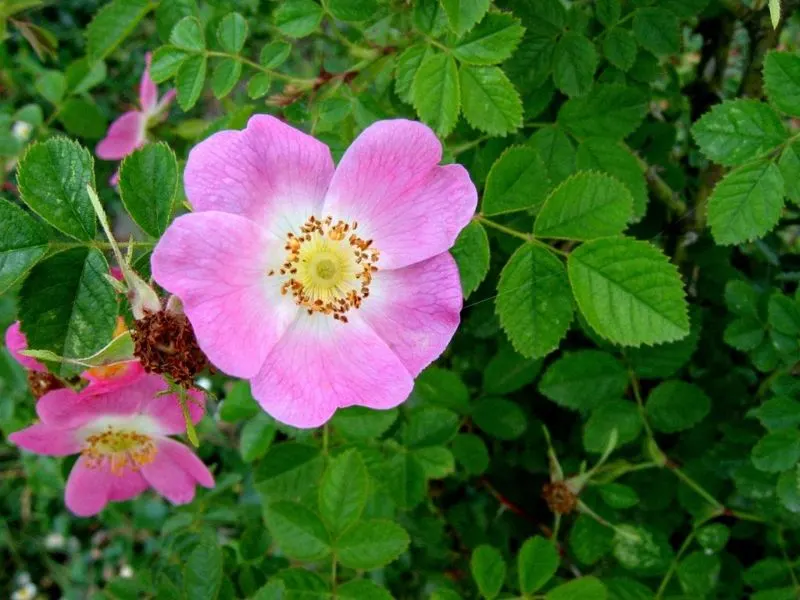
Nootka Rose enchants with its fragrant pink blossoms, thriving in coastal and inland settings alike. Its thorny stems offer natural protection for wildlife, creating a haven in your garden.
The rose hips, rich in vitamin C, provide food for birds and small mammals, enhancing your garden’s biodiversity. This rose’s adaptability to poor soils and minimal care needs make it a gardener’s ally.
Beyond its beauty and ecological contributions, Nootka Rose’s historical uses by indigenous cultures add depth to its presence. Its resilience and charm make it a treasured addition to native gardens.
Western Trillium
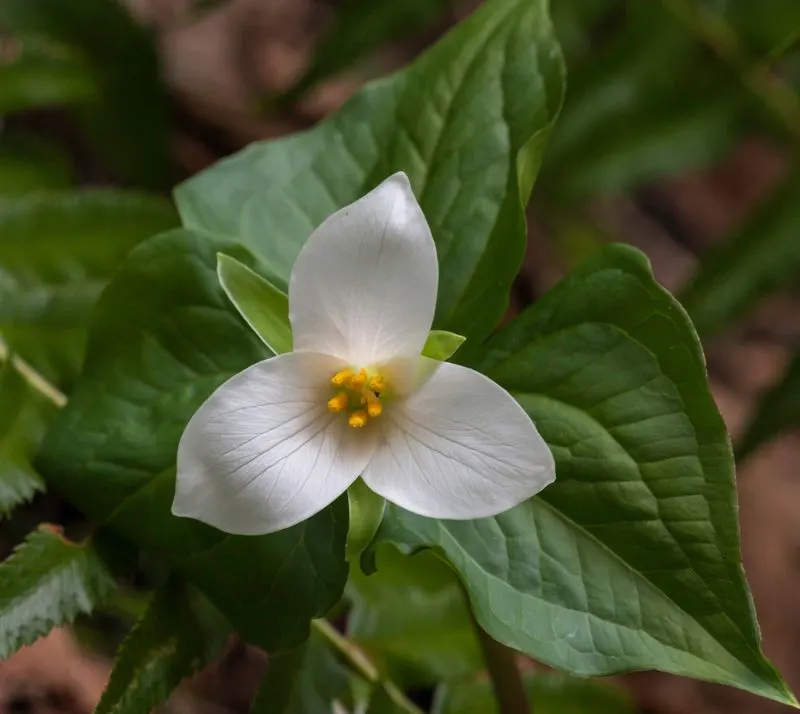
Western Trillium captivates with its three-petaled white flowers, a symbol of spring renewal. These perennials thrive in shaded woodland settings, where their beauty enhances serene landscapes.
Preferring rich, well-drained soils, they pair well with ferns and other shade-loving plants. The foliage provides a lush, green backdrop, complementing the striking floral display.
Beyond aesthetics, Western Trillium is a vital part of local ecosystems, supporting pollinators and contributing to biodiversity. Its delicate charm and ecological role make it a must-have for native plant enthusiasts.
Pacific Yew
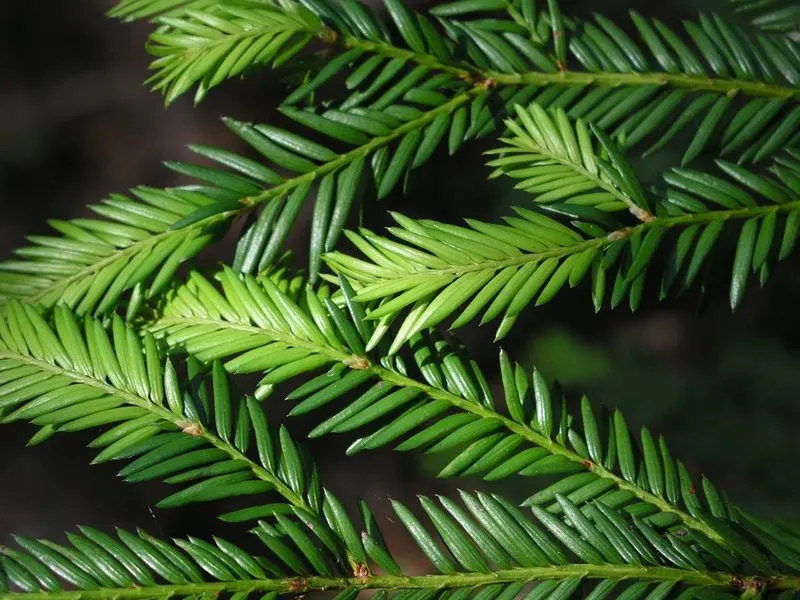
Pacific Yew offers intrigue with its dense, dark green foliage and vibrant red berries, adding elegance to shaded gardens. This slow-growing evergreen thrives in well-drained soils, typical of forest understories.
Its wood has historical significance, valued by indigenous cultures for tools and crafts. The tree’s resilience to harsh conditions makes it a sustainable choice for naturalized landscapes.
Beyond its beauty and cultural history, Pacific Yew supports local wildlife, offering habitat and food sources. Its unique presence and ecological contributions ensure it’s a cherished addition to native gardens.
False Solomon’s Seal
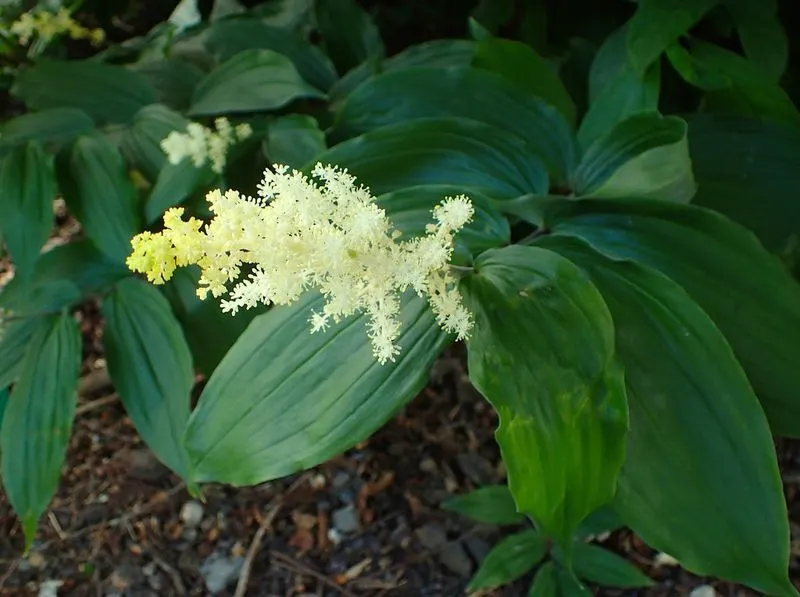
False Solomon’s Seal adds elegance with its arching stems and clusters of white flowers, illuminating shaded garden corners. This perennial thrives in rich, moist soils, complementing ferns and woodland plants.
In late spring, the fragrant flowers attract pollinators, enhancing garden biodiversity. As the season progresses, red berries appear, providing food for birds.
Beyond its visual appeal, False Solomon’s Seal is low-maintenance, making it ideal for gardeners seeking beauty without extensive effort. Its grace and ecological benefits make it a beloved choice for enhancing shaded landscapes.
Redwood Sorrel
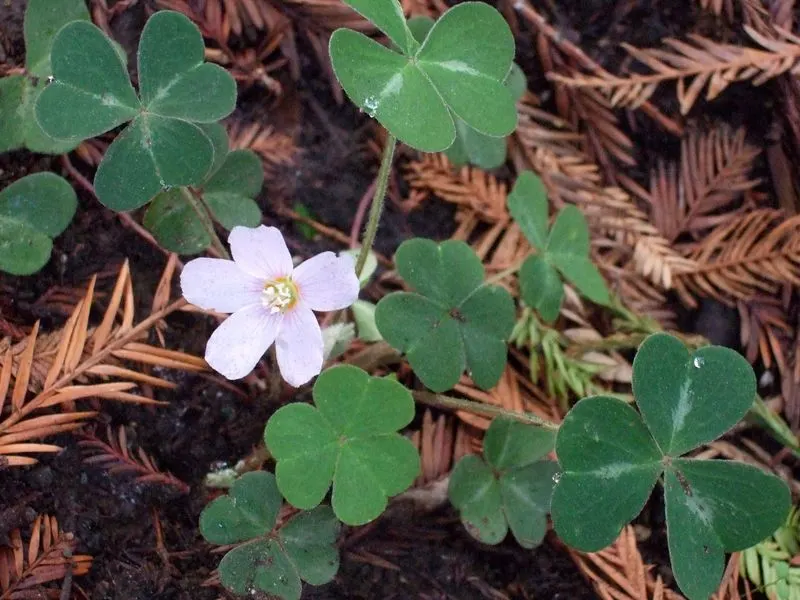
Redwood Sorrel charms with its clover-like leaves and delicate pink flowers, offering a soft carpet of greenery in shaded areas. This perennial thrives under towering trees, where its mat-forming growth adds texture.
Easy to care for, it requires minimal maintenance, making it perfect for those seeking low-effort beauty. The flowers attract pollinators, supporting garden ecosystems.
Its ability to thrive in acidic soils typical of forest understories ensures it fits seamlessly into Northwest gardens. Redwood Sorrel’s charm and ecological contributions make it a valuable addition to native plant landscapes.
Coastal Strawberry
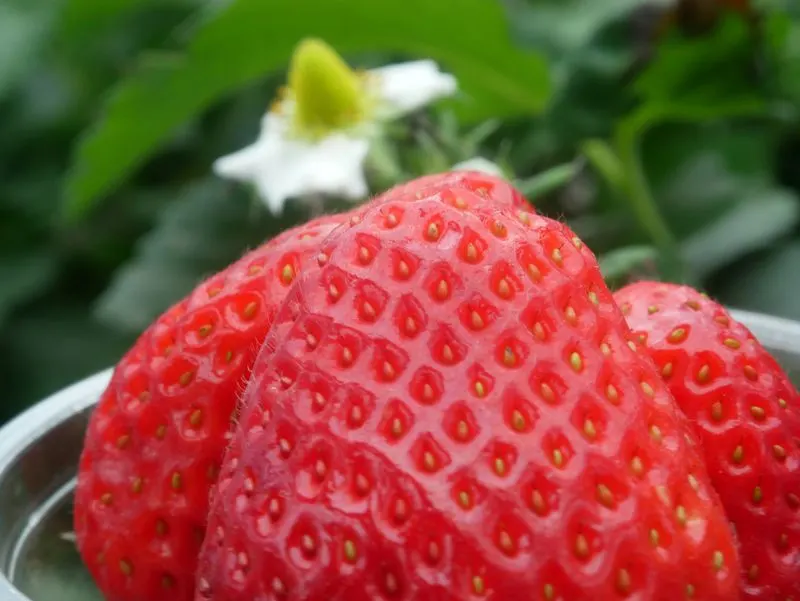
Coastal Strawberry adds charm with its small white flowers and bright red berries, perfect for sunny, sandy spots. This perennial ground cover thrives in coastal conditions, where other plants might struggle.
Its strawberries attract birds and other wildlife, adding life to your garden. The plant’s adaptability to various soil types and its drought tolerance make it a practical choice for sustainable landscapes.
Beyond its beauty, Coastal Strawberry plays a role in preventing soil erosion, stabilizing sandy soils with its spreading habit. Its ecological benefits and visual appeal make it a cherished native plant.
Maidenhair Fern
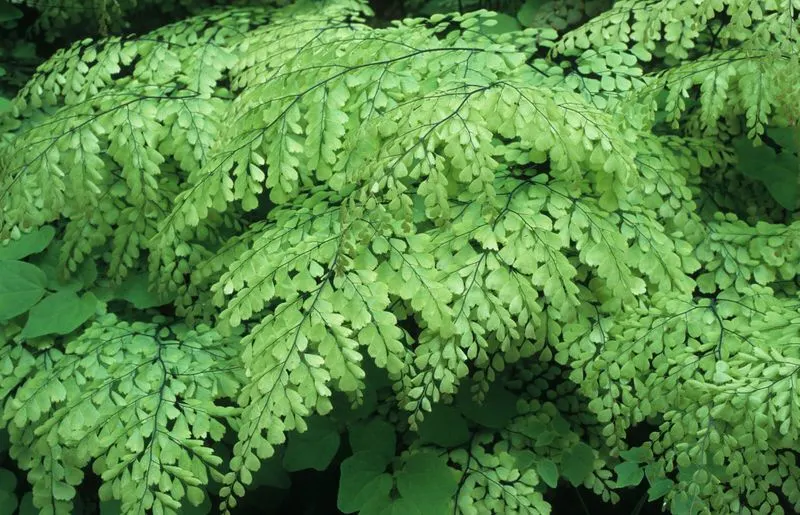
Maidenhair Fern captivates with its delicate, fan-shaped fronds, adding elegance to shaded garden corners. This perennial thrives in rich, moist soils, where its graceful growth complements other shade-loving plants.
Its intricate fronds create a soft, feathery texture, enhancing the visual appeal of garden landscapes. Easy to care for, Maidenhair Fern requires minimal maintenance, making it perfect for busy gardeners.
Beyond aesthetics, the fern’s presence supports local ecosystems by providing habitat for small wildlife. Its charm and ecological benefits make it a treasured addition to native plant gardens.
Sitka Spruce
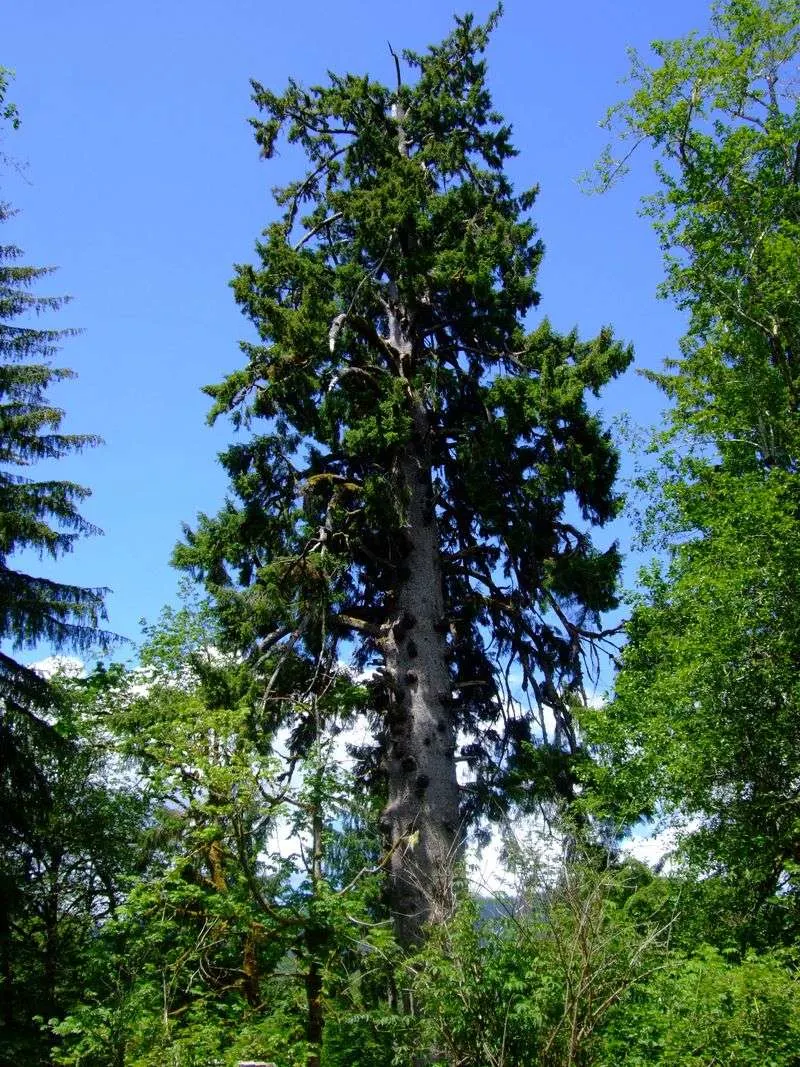
Sitka Spruce, with its towering stature and dense foliage, is a hallmark of coastal forests. This evergreen tree offers shelter for wildlife and stands resilient against harsh coastal winds.
Thriving in moist, well-drained soils, it adapts to various conditions, making it a versatile addition to larger landscapes. Its rapid growth and robust nature ensure a swift impact on garden ecosystems.
Beyond its practical benefits, Sitka Spruce adds architectural interest and a touch of wilderness to gardens. Its presence is both visually striking and ecologically valuable, capturing the essence of the Northwest.

